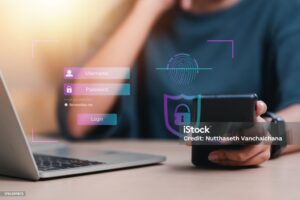
Identity theft has evolved dramatically in the digital age, transforming personal data into a highly valuable asset for cybercriminals. Stolen information is routinely traded and exploited to commit fraudulent activities, creating a global threat that continues to grow.
Data breaches occur almost daily, with identity theft remaining a major driver of cyber attacks. The global economy is estimated to lose over £3.2 trillion each year to cybercrime, and recent research from Cifas reveals a 57% surge in identity theft victims over the past year.
Criminals can exploit basic personal details—your name, address, phone number or banking information—to impersonate you and commit fraud. Using this data, they may open accounts, apply for loans or attempt to obtain official documents such as passports or driving licences.
Although some of this information can be gathered from physical documents, the fastest and easiest method for criminals is online, where oversharing and weak security habits make us vulnerable.
Social media platforms, insecure passwords and careless online behaviour can expose more information than you might expect—often enough to allow attackers to infiltrate accounts within minutes.
Identity Theft Prevention: 8 Essential Tips
Fortunately, there are practical steps you can take to safeguard your data and reduce the risk of identity theft.
1. Use Strong, Unique Passwords
Creating a strong password is your first line of defence. Weak or reused passwords are one of the easiest entry points for cybercriminals. Once they compromise a single account, linked accounts using the same password can also be breached.
A strong password should contain 8–15 characters, include upper and lowercase letters, and incorporate numbers or symbols. For added protection, create a passphrase—using the first letters of a memorable sentence—then substitute characters with numbers or symbols.
2. Adjust Your Social Media Privacy Settings
While social media allows us to connect, oversharing can expose you to identity theft or even home burglary. Cybercriminals can gather substantial personal information simply by analysing your posts and public profile.
Whether you use Instagram, Facebook, Twitter or LinkedIn, regularly review your privacy settings and restrict who can view your personal details. Avoid accepting unknown friend requests and never share information that reveals your location, travel plans or sensitive personal data.
3. Beware of Phishing Emails
Phishing attacks remain one of the most common methods used by criminals to steal personal data. These messages are intentionally designed to mimic legitimate organisations and lure you into revealing sensitive information.
Phishing emails may request personal information or contain malicious attachments that infect your device with malware once opened.
Look out for warning signs such as mismatched URLs, spelling mistakes, suspicious attachments, urgent language or unsolicited requests for personal data.
4. Avoid Using Public Wi-Fi
Although convenient, public Wi-Fi networks lack security and can expose your device to cybercriminals. With no authentication required, attackers can intercept data or distribute malware across unsecured devices.
This can lead to identity theft or your information being sold to third-party criminals. Avoid conducting financial or sensitive activity on public networks, or use a secure VPN if necessary.
5. Check Your Bank Statements Regularly
Monitor bank statements frequently for unusual activity. Criminals often begin with small test transactions, followed by larger withdrawals designed to empty the account.
If you spot unfamiliar charges, contact your bank or financial provider immediately.
6. Only Use Secure Websites
To ensure a website is safe, check that its URL begins with “https”. The “s” stands for secure, indicating encrypted communication between your browser and the website. While not perfect, HTTPS significantly reduces the risk of your data being intercepted.
7. Keep Security Software Updated
Up-to-date anti-virus software protects you by detecting threats and blocking unauthorised access. Regular updates also patch vulnerabilities, ensuring cybercriminals can’t exploit outdated systems.
8. Shred Sensitive Documents
Identity thieves target physical documents such as bank statements, payslips and official correspondence containing personal information. Shredding and disposing of sensitive paperwork prevents criminals from gaining access to valuable data.
Explore the MetaCompliance Human Risk Management Suite
Protect your organisation and improve cyber resilience with our integrated solutions purpose-built to reduce human risk. Our Human Risk Management Platform encompasses:
- Automated Security Awareness
- Advanced Phishing Simulations
- Risk Intelligence & Analytics
- Compliance Management
For a closer look at how these solutions can improve your organisation’s security posture, reach out to our team or schedule your demo.
FAQs about Identity Theft Prevention
What is identity theft?
Identity theft occurs when a criminal uses your personal information without permission to commit fraud or other offences.
How can I tell if I’m a victim of identity theft?
Warning signs include unexpected bills, unfamiliar transactions, denied credit or notifications about accounts you didn’t open.
What should I do if I suspect identity theft?
Contact your bank, change passwords immediately and report the incident to relevant authorities or fraud prevention services.
Are phishing emails still a major threat?
Yes. Phishing remains one of the easiest and most successful methods used by cybercriminals to steal sensitive information.